
Guatemala City: The Heartbeat of Central America
Discover Guatemala City: A vibrant blend of history, culture, and modernity in the heart of Central America, offering rich heritage, stunning natural beauty, and warm hospitality.
Guatemala City, the vibrant capital of Guatemala, offers a blend of history, culture, and modernity. Nestled in the highlands of Central America, this bustling metropolis is the largest city in the region and serves as the political, social, and economic hub of the country. From its colorful markets to its ancient ruins, Guatemala City is a destination that enchants travelers with its diverse attractions. The city is rich in history, with landmarks such as the National Palace of Culture and the Metropolitan Cathedral, which stand as testaments to its colonial past. For those interested in archaeology, the nearby ruins of Kaminaljuyú provide a fascinating glimpse into the ancient Maya civilization. The city's numerous museums, including the Museo Popol Vuh and the Museo Ixchel, offer deep dives into Guatemala's pre-Columbian and contemporary cultures. Guatemala City is also a gateway to the country's natural beauty. Just a short drive away, visitors can explore the picturesque Lake Atitlán, surrounded by volcanoes and traditional Maya villages. The city itself boasts several green spaces, such as the La Aurora Zoo and the Botanical Garden, perfect for a relaxing day out. With its lively nightlife, diverse cuisine, and welcoming locals, Guatemala City promises an unforgettable experience for every traveler.
Local tips in Guatemala City
- Stay alert and be cautious with your belongings, especially in busy areas and public transport.
- Visit the local markets such as Mercado Central for authentic Guatemalan crafts and souvenirs.
- Use reputable taxi services or ride-sharing apps for safe and reliable transportation.
- Try the traditional Guatemalan dish, Pepian, a flavorful stew that is a local favorite.
- Plan a day trip to nearby Antigua, a UNESCO World Heritage site known for its well-preserved Spanish Baroque-influenced architecture.
- Learn a few basic Spanish phrases; locals appreciate the effort and it can enhance your experience.
Neighbourhoods in Guatemala City
Guatemala City: The Heartbeat of Central America
Guatemala City, the vibrant capital of Guatemala, offers a blend of history, culture, and modernity. Nestled in the highlands of Central America, this bustling metropolis is the largest city in the region and serves as the political, social, and economic hub of the country. From its colorful markets to its ancient ruins, Guatemala City is a destination that enchants travelers with its diverse attractions. The city is rich in history, with landmarks such as the National Palace of Culture and the Metropolitan Cathedral, which stand as testaments to its colonial past. For those interested in archaeology, the nearby ruins of Kaminaljuyú provide a fascinating glimpse into the ancient Maya civilization. The city's numerous museums, including the Museo Popol Vuh and the Museo Ixchel, offer deep dives into Guatemala's pre-Columbian and contemporary cultures. Guatemala City is also a gateway to the country's natural beauty. Just a short drive away, visitors can explore the picturesque Lake Atitlán, surrounded by volcanoes and traditional Maya villages. The city itself boasts several green spaces, such as the La Aurora Zoo and the Botanical Garden, perfect for a relaxing day out. With its lively nightlife, diverse cuisine, and welcoming locals, Guatemala City promises an unforgettable experience for every traveler.
When is the best time to go to Guatemala City?
Iconic landmarks you can’t miss
Zoológico La Aurora
Explore Zoológico La Aurora: A captivating zoo in Guatemala City dedicated to wildlife conservation and an unforgettable visitor experience.
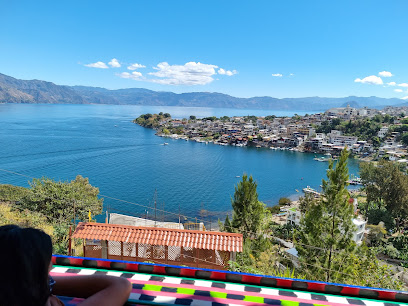
IRTRA Mundo Petapa
Discover IRTRA Mundo Petapa, a thrilling amusement park in Guatemala City, perfect for family fun and unforgettable adventures.
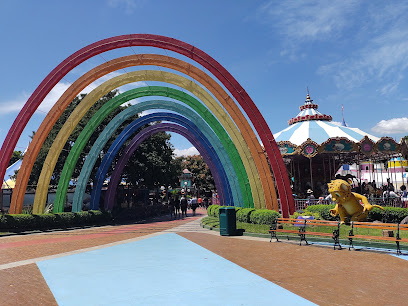
Oakland Place Guatemala
Experience shopping like never before at Oakland Place, Guatemala's vibrant shopping mall offering diverse brands and delightful dining options.
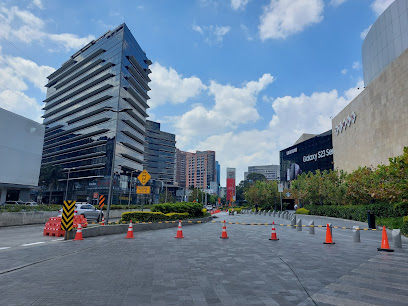
Plaza de la Constitución
Discover the vibrant Plaza de la Constitución, the cultural and historical heart of Guatemala City, where history meets natural beauty.
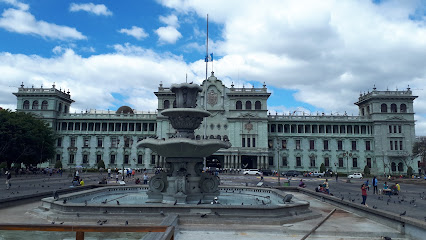
Arco de Santa Catalina
Explore the iconic Arco de Santa Catalina in Antigua Guatemala, a stunning symbol of colonial history framed by breathtaking landscapes.

Mercado Central
Experience the vibrant culture of Guatemala at Mercado Central, a bustling market filled with local flavors, handicrafts, and unforgettable memories.

Cerro de La Cruz
Experience breathtaking views at Cerro de La Cruz, a must-visit attraction in Antigua Guatemala for nature lovers and culture enthusiasts.
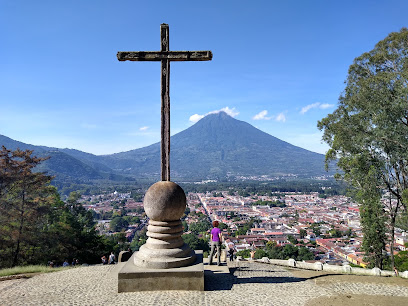
Palacio Nacional de la Cultura
Explore the Palacio Nacional de la Cultura, a stunning museum in Guatemala City showcasing the nation's rich cultural heritage and artistic achievements.
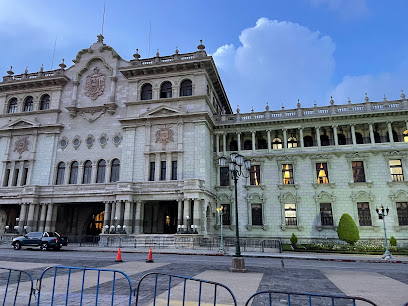
Torre del Reformador
Explore the iconic Torre del Reformador in Guatemala City, a monument steeped in history and offering breathtaking views of the vibrant cityscape.

Plaza España
Explore the vibrant Plaza España in Guatemala City, a cultural monument adorned with stunning sculptures and lush gardens, perfect for relaxation and photography.
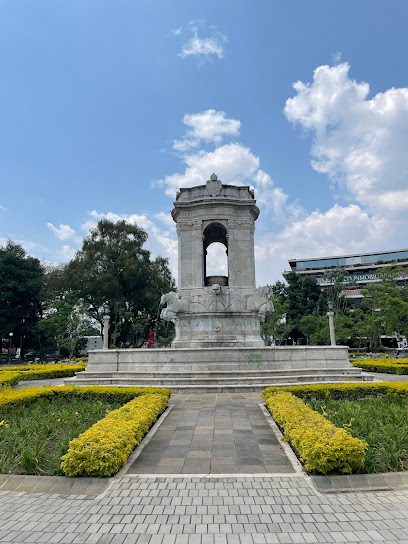
Restaurante El Adobe zona 1
Experience authentic Guatemalan cuisine at Restaurante El Adobe, a culinary gem in the heart of Guatemala City's vibrant Zone 1.

Iglesia San Francisco
Discover the architectural beauty and cultural significance of Iglesia San Francisco, a historic Catholic church in Guatemala City.
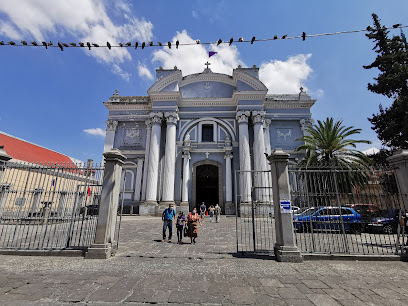
Mapa en Relieve de Guatemala
Discover the stunning topographical elegance of Guatemala at the Mapa en Relieve, an open-air museum showcasing the country's diverse landscapes.
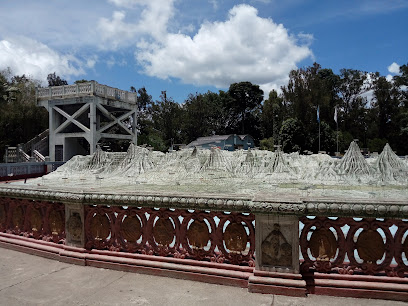
Palacio Cristal • Zona 9
Experience the best of Chinese cuisine at Palacio Cristal, a vibrant restaurant in Zona 9, Guatemala City, known for its authentic flavors and inviting atmosphere.
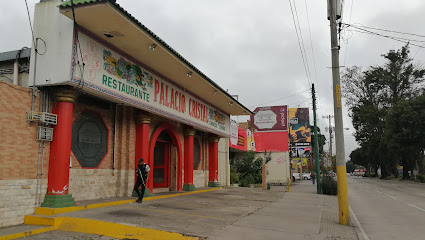
The Children's Museum of Guatemala
An interactive wonderland where learning and play unite, The Children's Museum of Guatemala inspires young minds through creativity and exploration.
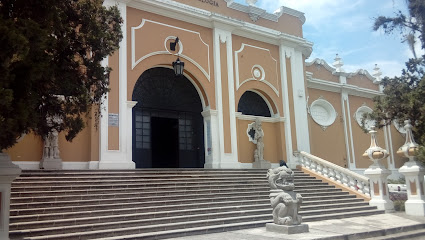
Unmissable attractions to see
Zoológico La Aurora
Explore Zoológico La Aurora, a captivating zoo in Guatemala City committed to animal conservation and offering unforgettable experiences for visitors of all ages.
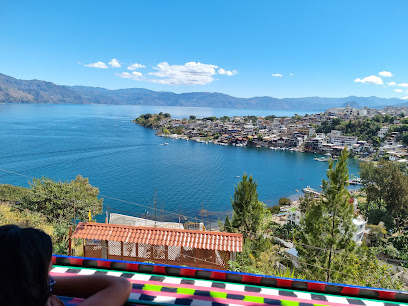
Parque Central de Antigua Guatemala
Experience the vibrant culture and history at Parque Central de Antigua Guatemala, the perfect spot for relaxation and local engagement amidst stunning landscapes.
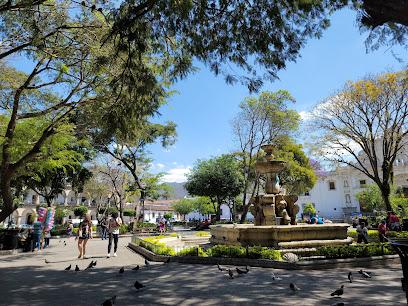
IRTRA Mundo Petapa
Discover the excitement and joy of IRTRA Mundo Petapa, Guatemala City's top amusement park filled with thrilling rides and family fun.
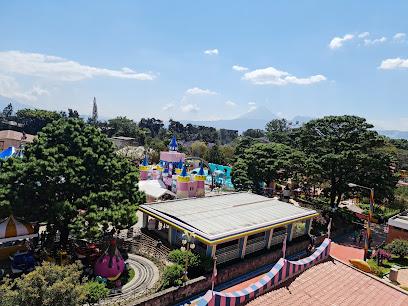
IRTRA Mundo Petapa
Unleash your adventurous spirit at IRTRA Mundo Petapa, the ultimate amusement park experience in Guatemala City, where fun and culture collide.
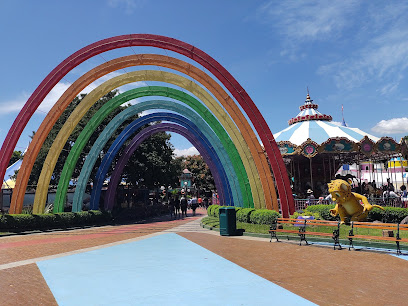
Plaza de la Constitución
Explore Plaza de la Constitución, Guatemala City's vibrant main square, rich in history, culture, and local flavor, perfect for every traveler.

Arco de Santa Catalina
Discover the stunning Arco de Santa Catalina, an iconic symbol of Antigua Guatemala's colonial heritage and vibrant local culture, perfect for unforgettable memories.

Cerro de La Cruz
Discover breathtaking views and rich history at Cerro de La Cruz, the iconic viewpoint of Antigua Guatemala, surrounded by majestic volcanoes.
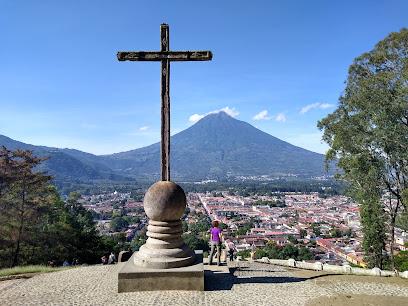
Centro Cultural Miguel Ángel Asturias
Discover the artistic marvels of Guatemala at Centro Cultural Miguel Ángel Asturias, where culture and performance come alive in stunning surroundings.
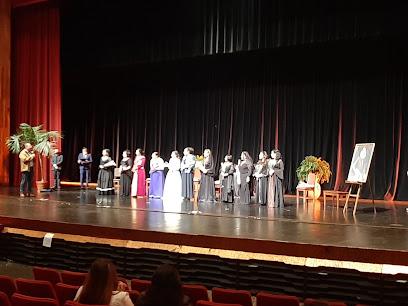
Iglesia de la Merced
Discover the stunning Iglesia de la Merced in Antigua Guatemala, where colonial architecture meets rich cultural heritage in a serene atmosphere.
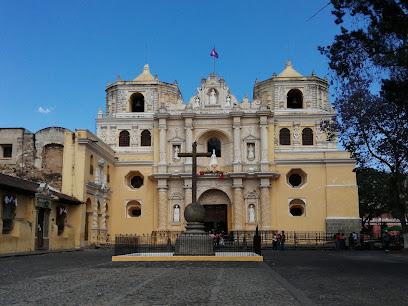
Plaza Berlín
Explore Plaza Berlín, a serene city park in Guatemala City, perfect for relaxation, nature walks, and cultural experiences amidst lush greenery.
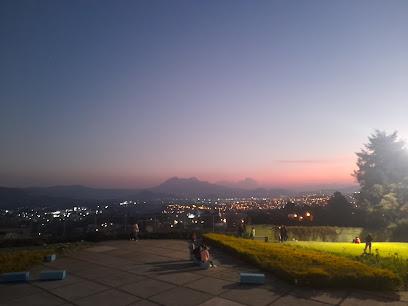
Palacio Nacional de la Cultura
Explore the cultural treasure of Guatemala at the stunning Palacio Nacional de la Cultura, a museum that showcases the nation's rich history and art.
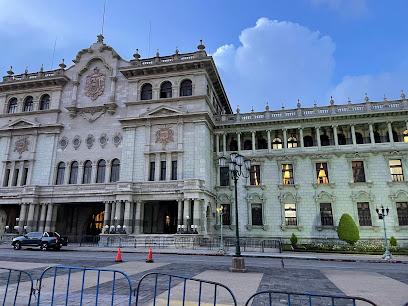
Tanque La Unión
Discover the charm and history of Tanque La Unión, a serene park and historical landmark in the heart of Antigua Guatemala, perfect for relaxation and exploration.
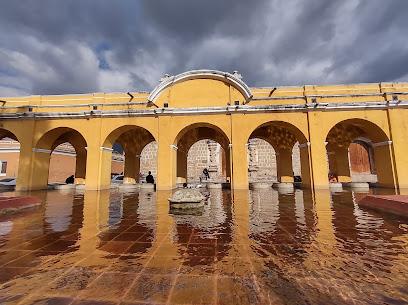
Archaeological Center kaminaljuyu
Explore the ancient Mayan ruins of Kaminaljuyu, a captivating archaeological site in Guatemala City steeped in history and cultural significance.
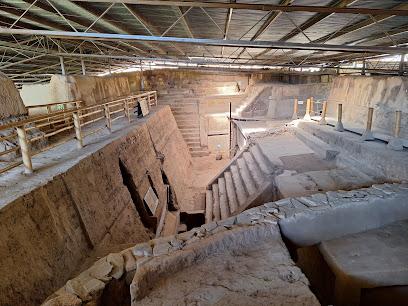
Hipódromo del Norte
Discover the excitement of horse racing and the beauty of nature at Hipódromo del Norte, a must-visit city park in Guatemala City.
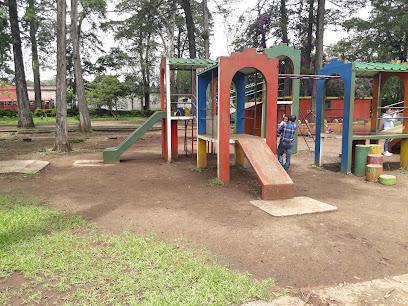
Plaza España
Experience the vibrant culture and rich history at Plaza España, a must-visit monument in the heart of Guatemala City.
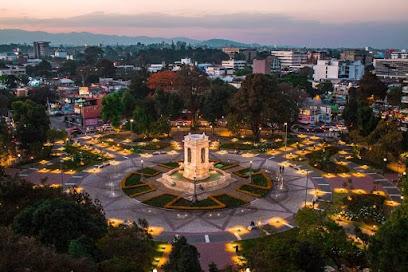
Essential places to dine
Hacienda Real Zona 10
Experience gourmet steak and fine dining at Hacienda Real Zona 10 in Guatemala City—where every meal is a celebration of flavor and culture.
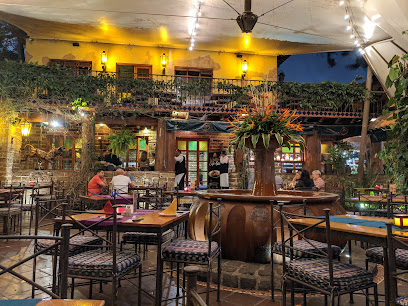
Los Tres Tiempos • Centro Histórico
Experience authentic Guatemalan flavors at Los Tres Tiempos in Centro Histórico, where tradition meets modern dining.

Restaurante El Adobe zona 1
Discover the essence of Guatemalan cuisine at Restaurante El Adobe with live marimba music and exceptional service.
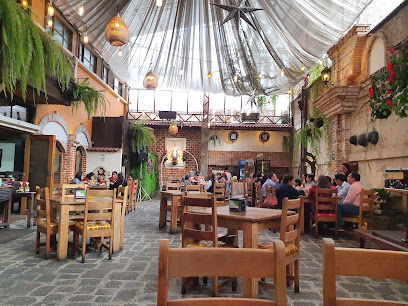
Rincón Del Steak
Discover the culinary excellence of Rincón Del Steak - where every meal is a celebration of flavor in Guatemala City.
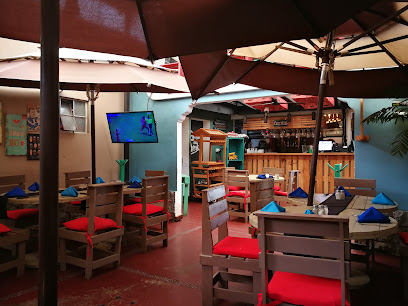
Donde Mikel
Experience the exquisite fusion of Spanish and Mediterranean flavors at Donde Mikel in Guatemala City.
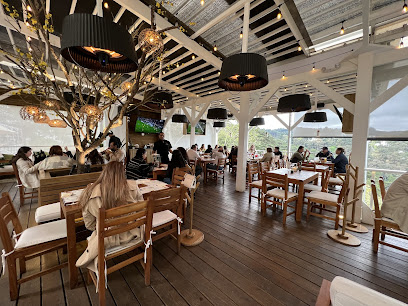
Montano's
Discover the exquisite flavors at Montano's in Guatemala City - where local tradition meets modern culinary artistry.
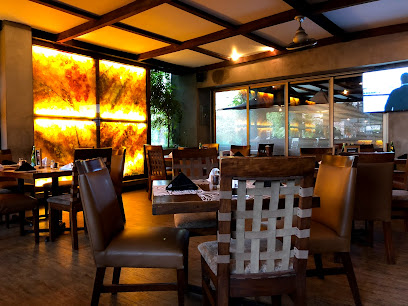
Del Griego
Experience the best of Greek cuisine at Del Griego in Guatemala City, where authentic flavors meet a warm atmosphere.
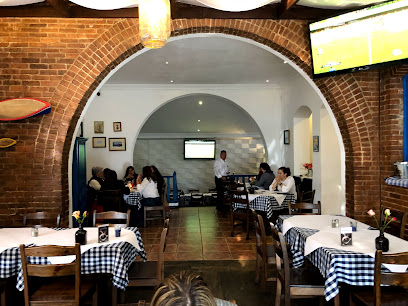
Arrin Cuan
Discover the vibrant flavors of Guatemala at Arrin Cuan - where tradition meets modern cuisine in a cozy setting.

Café Esquina Jazz
Experience vibrant flavors and live jazz at Café Esquina Jazz in Guatemala City – where culinary delights meet musical enchantment.
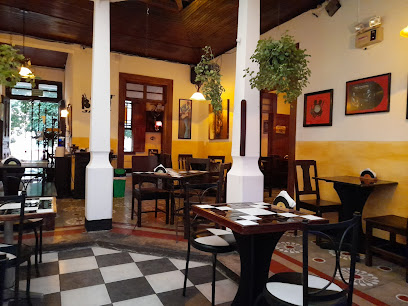
Las Carnes de Rodrigo
Experience authentic Guatemalan cuisine at Las Carnes de Rodrigo, where every bite of grilled meat tells a story.
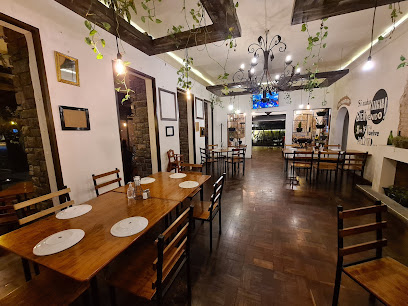
Roque Rosito Café Gourmet
Discover the flavors of Guatemala at Roque Rosito Café Gourmet - where culinary excellence meets local charm.
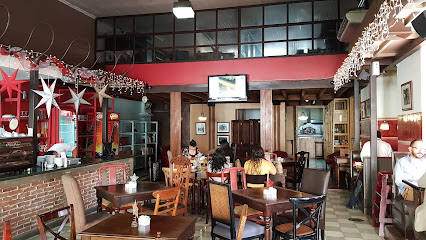
Restaurante Ambia
Discover culinary excellence at Restaurante Ambia in Guatemala City – where tradition meets innovation in every exquisite dish.
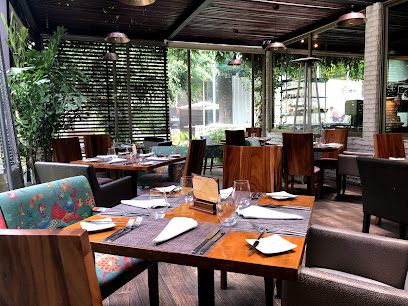
Portal del Angel - Plaza Fontabella
Discover the flavors of Argentina at Portal del Angel - Plaza Fontabella in Guatemala City; a steak lover's paradise with exquisite cuisine.
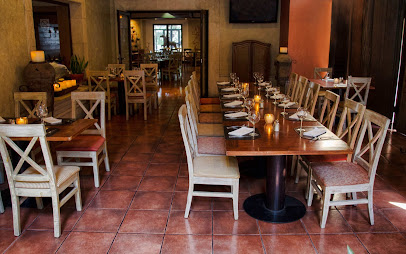
Aída Restaurant
Experience the flavors of Guatemala at Aída Restaurant—where tradition meets modern cuisine in a warm setting.
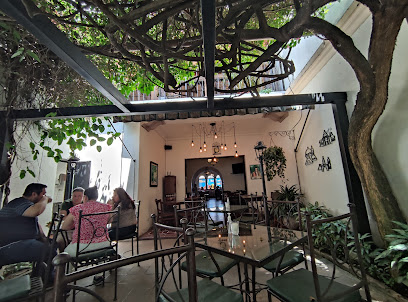
Palermo Restaurante, Fontabella Zona 10
Experience the flavors of Guatemala at Palermo Restaurante in Zone 10 - where tradition meets modern dining.
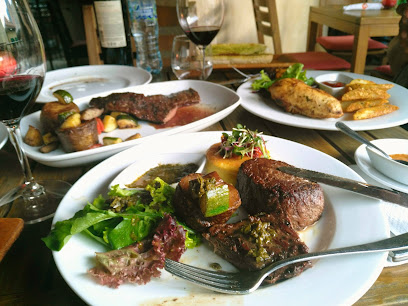
Markets, malls and hidden boutiques
Oakland Place Guatemala
Experience the vibrant retail and dining scene at Oakland Place, Guatemala City’s premier shopping destination for tourists and locals alike.
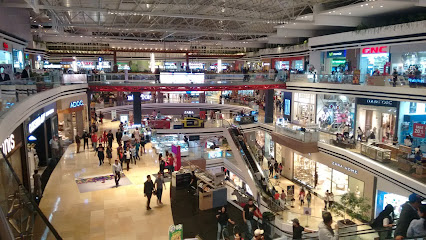
Mercado Central
Discover the essence of Guatemala at Mercado Central, a bustling market filled with local crafts, fresh produce, and authentic cuisine.
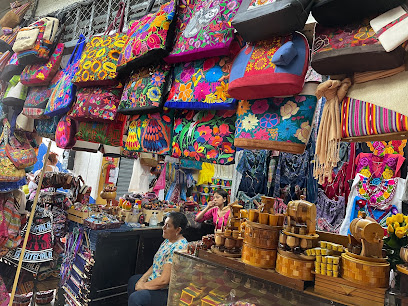
Arkadia Shopping
Explore the vibrant shopping experience at Arkadia Shopping in Guatemala City with diverse stores, delicious dining, and exciting entertainment.
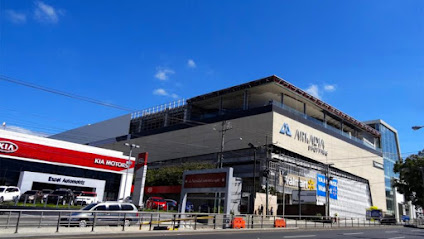
Emporium • Peri Roosevelt
Discover stylish men's clothing at Emporium in Guatemala City's Peri Roosevelt Shopping Center, where contemporary fashion meets excellent service.
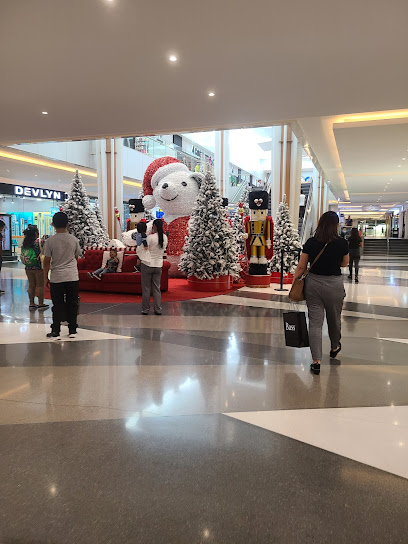
Colectivo Shop
Discover unique, locally crafted gifts at Colectivo Shop, a gem in Guatemala City reflecting the vibrant culture and artistry of the region.
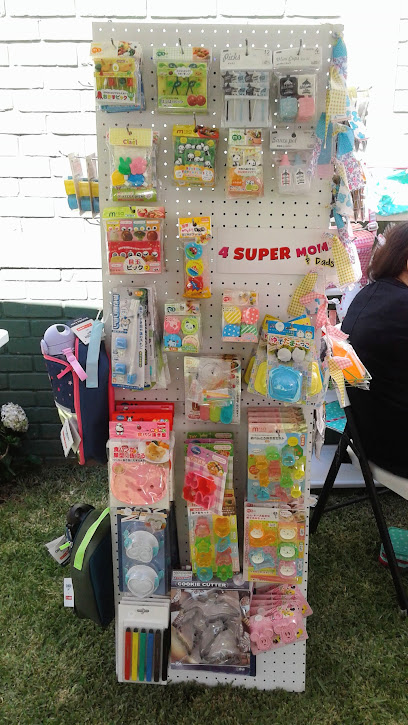
JADE Artesanías
Discover authentic Guatemalan crafts and premium cigars at JADE Artesanías, a must-visit souvenir store in the heart of Guatemala City.
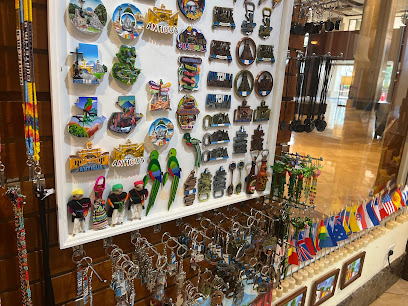
Artisan Market, contiguous to the Museum of Anthropology walking distance from airport
Discover the Artisan Market near the Museum of Anthropology in Guatemala City, a vibrant hub for local crafts, food, and cultural experiences.
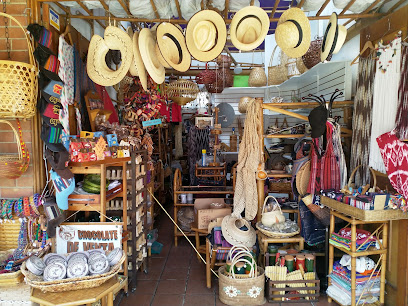
Tienda Laksmi Guatemala
Discover the essence of Guatemalan culture at Tienda Laksmi, a vibrant clothing store featuring unique handmade garments and accessories.

Kiwi gt
Explore Kiwi GT, a vibrant fashion accessories store in Guatemala City, offering unique local designs and handcrafted treasures for every style.

Shopping Love Gt
Explore Shopping Love Gt in Guatemala City for stylish clothing that blends local craftsmanship with contemporary trends, perfect for every occasion.

Detalles & Variedades
Explore Detalles & Variedades for unique gifts and local crafts, capturing the essence of Guatemala's rich culture and artistry.

Ephemeral Shop
Explore the Ephemeral Shop for stylish sportswear that embodies the active culture of Guatemala City, perfect for every visitor.

Madame Boutique
Explore the vibrant fashion scene at Madame Boutique, a stylish women's clothing store in the heart of Guatemala City, showcasing local and international designs.

Season Style GT
Explore the elegance of boutique fashion at Season Style GT in the heart of Guatemala City, where local craftsmanship meets modern style.

GE boutique
Explore GE Boutique in Guatemala City for a unique blend of contemporary fashion and local craftsmanship, perfect for stylish souvenirs.

Essential bars & hidden hideouts
El Establo
Experience the vibrant nightlife of Guatemala City at El Establo, a premier live music bar offering great drinks and unforgettable performances.
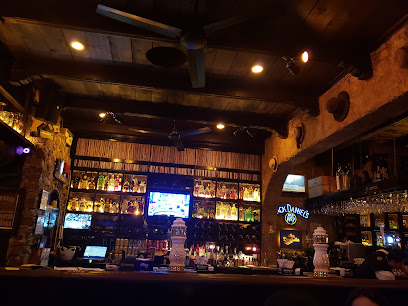
Proyecto poporopo
Experience the vibrant flavors of Guatemala at Proyecto Poporopo, a charming tapas bar in the heart of Guatemala City, perfect for social dining.
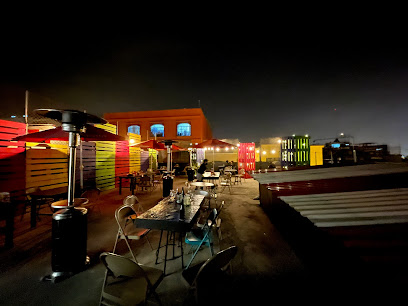
Rattle n Hum Bar and Grill
Discover the vibrant nightlife at Rattle n Hum Bar and Grill in Guatemala City, where great food, drinks, and live music create unforgettable experiences.
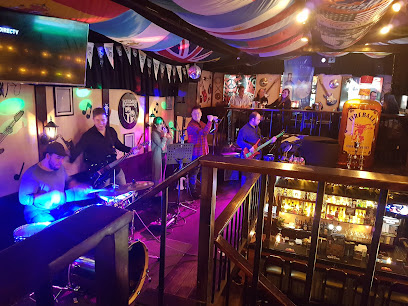
Bajo Fondo Funk
Experience the vibrant nightlife of Guatemala City at Bajo Fondo Funk, a bar that combines great music, refreshing cocktails, and an inviting atmosphere.
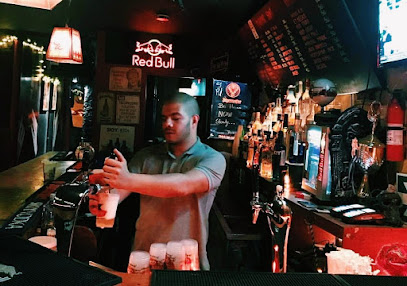
TrovaRock
Experience the vibrant culture of Guatemala City at TrovaRock, a bar and cultural center blending music, art, and community in an unforgettable atmosphere.
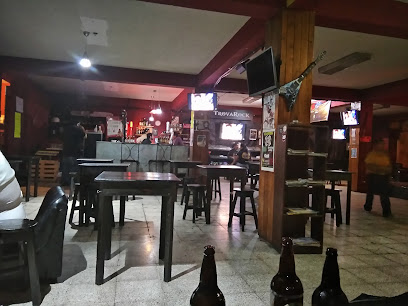
Las Cien Puertas
Experience the vibrant nightlife of Las Cien Puertas, a must-visit bar in Guatemala City offering diverse drinks and a lively atmosphere.
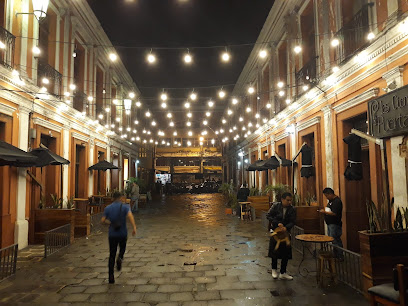
Red Lion Pub
Discover the lively spirit of Red Lion Pub in Guatemala City - a blend of delicious food, refreshing drinks, and an energetic atmosphere.
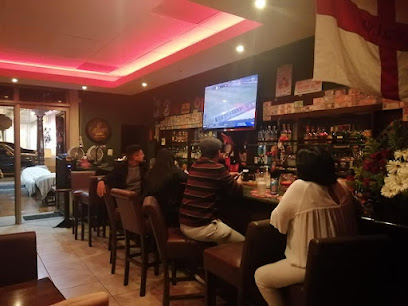
THE LOBBY
Discover the vibrant flavors of Guatemala at The Lobby, a top grill and bar in the heart of Guatemala City, offering a unique culinary experience.
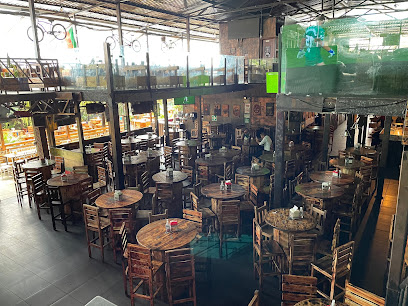
Rockers Metal Bar
Discover the vibrant world of Rockers Metal Bar, where delicious grilled food meets the electrifying vibe of rock and metal music in Guatemala City.
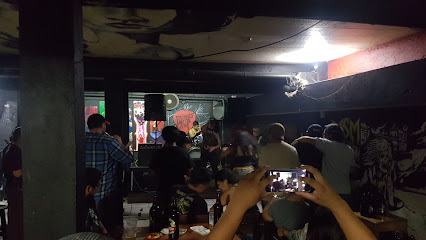
Shakespeare’s Pub
Discover the vibrant nightlife at Shakespeare’s Pub, a cozy bar in Guatemala City boasting an extensive drink selection and a warm atmosphere.
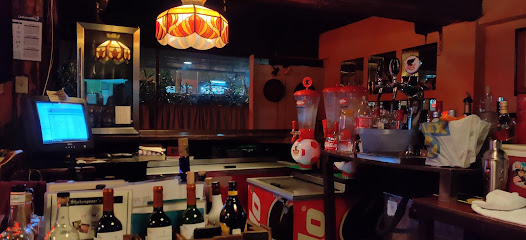
Bar&restaurante Hades
Experience the vibrant nightlife at Bar&restaurante Hades, where cocktails meet local flavors in the heart of Guatemala City.
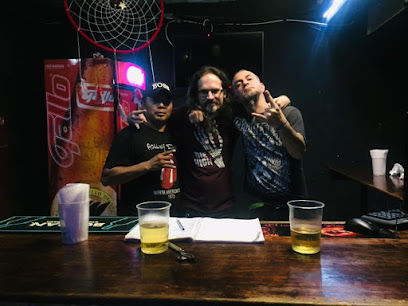
D&M Resto-bar
Experience the vibrant nightlife at D&M Resto-bar in Guatemala City, where local flavors and great company come together in a historic setting.
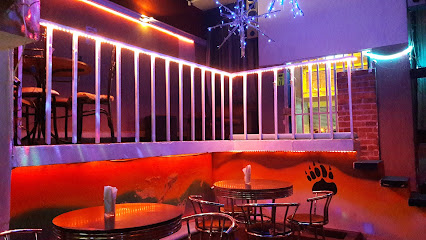
Whisky Den & Coffee Bar
Discover Whisky Den & Coffee Bar - a whiskey lover's paradise in the heart of Guatemala City, offering a cozy ambiance and a diverse drink selection.
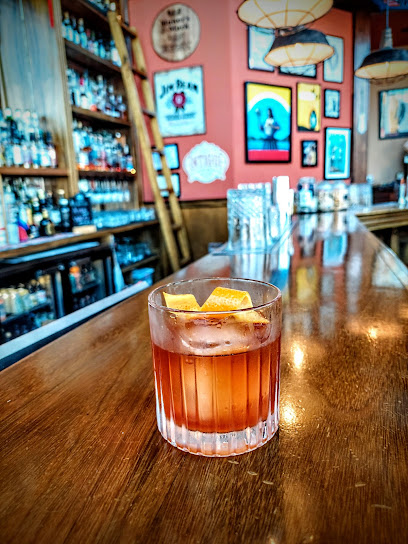
Nicos Bar
Discover Nicos Bar in Guatemala City: A cozy spot offering a wide range of drinks and a welcoming atmosphere for tourists and locals alike.
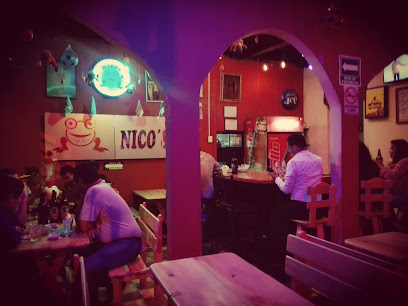
Balam Cocktail Bar
Experience the vibrant nightlife at Balam Cocktail Bar in Guatemala City with exceptional cocktails and a cozy atmosphere.
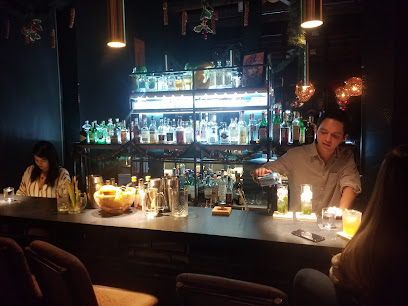
Local Phrases
-
- HelloHola
[OH-lah] - GoodbyeAdiós
[ah-DYOHSS] - YesSí
[SEE] - NoNo
[NOH] - Please/You're welcomePor favor/De nada
[pohr fah-BOHR/deh NAH-dah] - Thank youGracias
[GRAH-syahss] - Excuse me/SorryDisculpe/Lo siento
[dee-SKUL-peh/loh SYEHN-toh] - How are you?¿Cómo estás?
[KOH-moh ehs-TAHS] - Fine. And you?Bien. ¿Y tú?
[BYEHN. ee too] - Do you speak English?¿Hablas inglés?
[AH-blahss een-GLEHS] - I don't understandNo entiendo
[NOH ehn-TYEHN-doh]
- HelloHola
-
- I'd like to see the menu, pleaseMe gustaría ver el menú, por favor
[meh goos-tah-REE-ah behr ehl MEH-noo, pohr fah-BOHR] - I don't eat meatNo como carne
[NOH KOH-moh KAHR-neh] - Cheers!¡Salud!
[sah-LOOD] - I would like to pay, pleaseMe gustaría pagar, por favor
[meh goos-tah-REE-ah pah-GAHR, pohr fah-BOHR]
- I'd like to see the menu, pleaseMe gustaría ver el menú, por favor
-
- Help!¡Ayuda!
[ah-YOO-dah] - Go away!¡Vete!
[VEH-teh] - Call the Police!¡Llama a la policía!
[YAH-mah ah lah poh-LEE-see-ah] - Call a doctor!¡Llama a un doctor!
[YAH-mah ah oon DOHK-tohr] - I'm lostEstoy perdido/a
[ehs-TOY pehr-DEE-doh/dah] - I'm illEstoy enfermo/a
[ehs-TOY ehn-FAIR-moh/dah]
- Help!¡Ayuda!
-
- I'd like to buy...Me gustaría comprar...
[meh goos-tah-REE-ah kohm-PRAR] - I'm just lookingSólo estoy mirando
[SOH-loh ehs-TOY mee-RAHN-doh] - How much is it?¿Cuánto cuesta?
[KWAHN-toh KWEHS-tah] - That's too expensiveEso es demasiado caro
[EH-soh ehs deh-mah-SYA-doh KAH-roh] - Can you lower the price?¿Puedes bajar el precio?
[PWEH-dehs BAH-hahr ehl PREE-syoh]
- I'd like to buy...Me gustaría comprar...
-
- What time is it?¿Qué hora es?
[keh OH-rah ehs] - It's one o'clockEs la una
[ehs lah OO-nah] - Half past (10)Las diez y media
[lahss DYEHSS ee MEH-dee-ah] - MorningMañana
[mah-NYAH-nah] - AfternoonTarde
[TAHR-deh] - EveningNoche
[NOH-cheh] - YesterdayAyer
[ah-YEHR] - TodayHoy
[HOY] - TomorrowMañana
[mah-NYAH-nah] - 1Uno
[OO-noh] - 2Dos
[DOHS] - 3Tres
[TREHS] - 4Cuatro
[KWAH-troh] - 5Cinco
[SEEN-koh] - 6Seis
[SAYSS] - 7Siete
[SYEH-teh] - 8Ocho
[OH-choh] - 9Nueve
[NWEH-veh] - 10Diez
[DYEHSS]
- What time is it?¿Qué hora es?
-
- Where's a/the...?¿Dónde está...?
[DOHN-deh ehs-TAH] - What's the address?¿Cuál es la dirección?
[KWAHL ehs lah dee-rehk-SYOHN] - Can you show me (on the map)?¿Puedes mostrarme (en el mapa)?
[PWEH-dehs mohs-TRAHR-meh (ehn ehl MAH-pah)] - When's the next (bus)?¿Cuándo es el próximo (autobús)?
[KWAHN-doh ehs ehl proh-KSEE-moh (ow-toh-BOOS)] - A ticket (to ....)Un boleto (a ....)
[oon boh-LEH-toh (ah)]
- Where's a/the...?¿Dónde está...?
History of Guatemala City
-
Guatemala City, officially known as Nueva Guatemala de la Asunción, was founded in 1776 after the devastating earthquakes in 1773 destroyed the previous capital, Antigua Guatemala. The Spanish colonial authorities decided to move the capital to a safer location, and thus, Guatemala City was established in the Valle de la Ermita.
-
Guatemala City played a crucial role in the independence movement from Spain. On September 15, 1821, the Act of Independence of Central America was signed in the city, declaring the independence of the Captaincy General of Guatemala from Spanish rule.
-
During the 19th century, Guatemala City underwent significant changes, including the construction of important buildings and infrastructure. The Central American Federation, which included Guatemala, dissolved in 1839, and Guatemala City became the capital of the independent Republic of Guatemala.
-
In 1871, the Liberal Reform led by President Justo Rufino Barrios brought significant changes to Guatemala City. The reforms included modernization efforts, such as the introduction of railways, telegraph lines, and the establishment of public education. The city saw the construction of many iconic buildings during this period.
-
Guatemala City was struck by a series of devastating earthquakes between 1917 and 1918. The quakes caused widespread destruction, collapsing buildings and infrastructure. The city was rebuilt in the following years, giving rise to modern architectural styles and urban planning.
-
Guatemala City was a focal point during the Guatemalan Civil War, which lasted from 1960 to 1996. The city experienced political turmoil, violence, and protests. Many government buildings and public spaces became sites of significant historical events during this period.
-
In recent decades, Guatemala City has seen rapid urban development and modernization. The city has expanded significantly, with new residential areas, commercial centers, and infrastructure projects. Today, it is a vibrant metropolis that blends its rich historical heritage with contemporary urban life.
-
Guatemala City is home to numerous cultural landmarks that reflect its diverse history. Important sites include the National Palace of Culture, the Metropolitan Cathedral, and various museums such as the National Museum of Archaeology and Ethnology. These landmarks offer insights into the city's historical and cultural evolution.
Guatemala City Essentials
-
Guatemala City is served by La Aurora International Airport (GUA), located just 6 kilometers south of the city center. Direct flights are available from major cities in North and South America, as well as some European destinations. Taxis and shuttle services are available from the airport to various parts of the city. Alternatively, you can also reach Guatemala City by long-distance bus services from neighboring countries like Mexico, El Salvador, and Honduras.
-
Guatemala City offers various modes of transportation including taxis, buses, and ride-sharing services like Uber. The city is divided into zones, making it relatively easy to navigate. Public buses, known as 'camionetas' or 'chicken buses,' are colorful and inexpensive but can be crowded and less safe. For more comfort and safety, opt for 'Transmetro,' the city’s rapid bus transit system. Taxis are widely available but ensure they are from a reputable company or use ride-sharing apps.
-
The official currency is the Guatemalan Quetzal (GTQ). Credit cards are accepted in most hotels, restaurants, and larger stores, but it's advisable to carry cash for smaller establishments and markets. ATMs are available throughout the city, but exercise caution when using them and preferably use those located inside banks or shopping centers.
-
While Guatemala City has areas that are generally safe for tourists, there are neighborhoods with high crime rates, particularly zones 3, 6, 18, and 21. Tourists should avoid these areas, especially after dark. Stick to well-known areas like Zone 10 (Zona Viva), Zone 1 (Historic Center), and Zone 13 (near the airport). Always be aware of your surroundings, keep valuables secure, and avoid displaying expensive items.
-
In case of emergency, dial 110 for police assistance, 122 for fire services, and 128 for medical emergencies. Major hospitals like Hospital General San Juan de Dios and Hospital Roosevelt are equipped to handle emergencies. It's advisable to have travel insurance that covers medical emergencies, as medical care can be expensive. For minor health concerns, pharmacies ('farmacias') are widely available.
-
Fashion: Do dress conservatively, especially when visiting religious sites. Avoid wearing flashy jewelry or expensive accessories. Religion: Do respect local customs and traditions. When visiting churches, dress modestly and remove hats. Public Transport: Do use reputable taxi services or ride-sharing apps. Don't use public buses late at night. Greetings: Do greet people with a handshake and a polite 'Buenos días' or 'Buenas tardes.' Eating & Drinking: Do try local dishes like 'pepian' and 'tamales.' Don't drink tap water; always opt for bottled water.
-
To experience Guatemala City like a local, visit the markets such as Mercado Central and Mercado de Artesanías for handmade goods and fresh produce. Take a stroll in the historic center (Zone 1) to see the National Palace and Metropolitan Cathedral. Enjoy local cuisine at street vendors but ensure the food is freshly prepared. Attend a local football match if possible; the atmosphere is electric and provides a glimpse into local culture.
Trending Landmark in Guatemala City
-
Zoológico La Aurora
-
IRTRA Mundo Petapa
-
Oakland Place Guatemala
-
Plaza de la Constitución
-
Arco de Santa Catalina
-
Mercado Central
-
Cerro de La Cruz
-
Palacio Nacional de la Cultura
-
Torre del Reformador
-
Plaza España
-
Restaurante El Adobe zona 1
-
Iglesia San Francisco
-
Mapa en Relieve de Guatemala
-
Palacio Cristal • Zona 9
-
The Children's Museum of Guatemala
Nearby Cities to Guatemala City
-
Things To Do in Antigua Guatemala
-
Things To Do in Panajachel
-
Things To Do in Chichicastenango
-
Things To Do in Lake Atitlán
-
Things To Do in Quetzaltenango
-
Things To Do in Chalchuapa
-
Things To Do in Santa Ana
-
Things To Do in Copán Ruinas
-
Things To Do in San Salvador
-
Things To Do in Suchitoto
-
Things To Do in La Libertad
-
Things To Do in Santa Rosa de Copán
-
Things To Do in Gracias
-
Things To Do in Rio Dulce
-
Things To Do in Livingston

















